In the beginning there was the production line: the hammering and the pumping and the noise. Always the noise. "Detroit was an industrial city," says Alice Cooper. "It was like Newcastle. Everybody worked for Ford or Chevrolet or GMC. Everybody's parents worked on the assembly line. The kids were street kids. I think the Detroit sound has something to do with working with big machines; it made people feel at home hearing big, loud rock music."
Cooper’s new album, Detroit Stories, celebrates the city that he was born in and that made his name, full of songs that evoke the spirit of Detroit’s 1960s rock’n’roll scene, where the bands were faster, harder and tougher than in any other American city, and the records sounded like they were recorded with everything pushed into the red.
In LA, if a Detroit act was in town, people would come home from work, put on their torn-up Levis, put on a black leather jacket, and try to look like they belonged. In Detroit, they'd just go from work like that, as that's the way they dressed
“You had to come on stage in Detroit with attitude, and that’s what crowds loved,” says Cooper, who is now 73. “For some reason that midwest mentality was not sophisticated at all. It was tribal and kind of sexual. Here’s the difference: in Los Angeles, if a Detroit act was in town, people would come home from work, put on their torn-up Levis, put on a black leather jacket, and try to look like they belonged. In Detroit, they’d just go from work like that because that’s the way they dressed; they had combat boots on. There was nothing phoney about it. So if you were a Detroit band, you better bring it or you’re not going to be there.”
Over the years the high-energy sound of Detroit rock’n’roll has been pared back in the imagination to an endless repetition of two names. “When you read journalism about it, it’s all the Stooges and the MC5,” says Deniz Tek, a teenage fan in Michigan who founded his own Detroit-inspired band, Radio Birdman, after emigrating to Australia. “But there’s some really great stuff that gets very little attention paid to it.”
Rock history has lionised the Five and the Stooges for obvious reasons: the former brought political radicalism into rock’n’roll, helped inspire punk and metal, and – at their best – fulfilled their promise of melding free jazz and hard rock; the latter were the reductio ad absurdum of teenage alienation, and the launchpad for Iggy Pop.
But the story of Detroit rock'n'roll is also about Mitch Ryder and the Detroit Wheels, The Rationals, Scott Richardson, Bob Seger, Ted Nugent, and the musicians who became glam rock stars later on: Cooper and Suzi Quatro. It is also about how white kids in what was, by the standards of the United States in the 1960s, a racially integrated city took the soul music of Detroit's Motown label and slowly absorbed its lessons until they were playing something completely different.
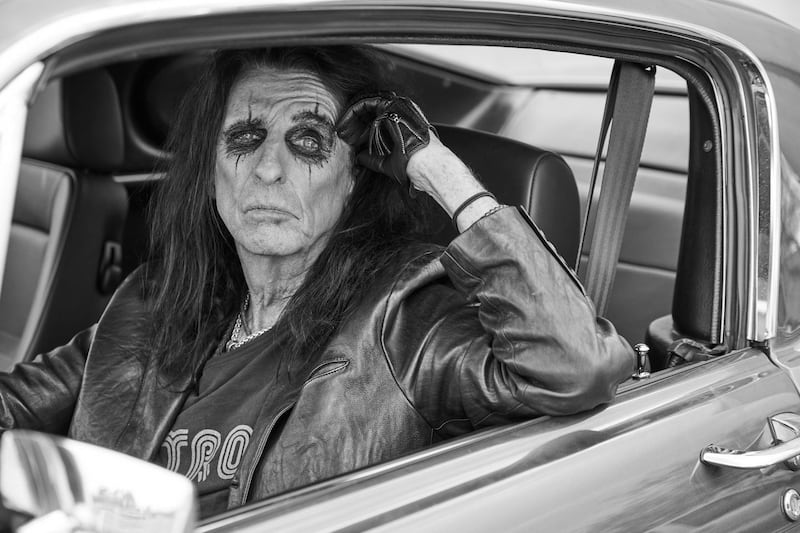
“We were the first band,” says the drummer Johnny “Bee” Badanjek of Mitch Ryder and the Detroit Wheels. They weren’t just the first; they were the biggest. Across 1965 and 1966, as “British invasion” bands such as The Beatles were bringing high-energy guitar pop to the American masses, they had a series of top 10 US hits with improbably exciting, viciously driven R&B singles – Jenny Take a Ride!, Little Latin Lupe Lu, Devil with a Blue Dress On – that still sound thrilling today. They had been playing around Michigan as Billy Lee & the Rivieras, “in a lot of the black clubs because we were doing a lot of the soul songs”, Badanjek says. “A lot of Motown acts were not on the national scene yet, so we were on some of the shows with them. And we got pretty big, pretty fast around here.”
Badanjek was barely into his teens when the impresario Bob Crewe took them to New York to rename and drill them. They were so young and green they took everything they owned – “If you go on the road, you carry one suitcase. We had 36 boxes of clothes” – and were soon packed off to play a navy base in Newfoundland. “We got a prop plane with moose hunters, sitting in their seats with their guns and their Elmer Fudd hats on, then had to drive 90 miles down a gravel road. And we played there for two weeks. It was all guys. Every night we had to tear down the gear and go to another club on the base.”
Like the Wheels, the first wave of Detroit bands were startlingly young. Scott Richardson was still in his senior year in high school when he formed the Chosen Few who featured the future Stooges James Williamson and, later, Ron Asheton. “We were doing four sets a night, really, really slogging,” Richardson says. “I was making $125 a week. My dad was incredibly astounded and pissed off at the same time.”
The Chosen Few were there for one of the key moments in Detroit rock history, in October 1966: the opening night of the Grande Ballroom, where perhaps the definitive Detroit rock’n’roll album, MC5’s Kick Out the Jams, was later recorded. “It was an entirely new kind of music and vibe,” says Richardson, who later formed the Scot Richard Case, playing British invasion-style rock, and then “metaphysical psychedelia” with his next band, the SRC.
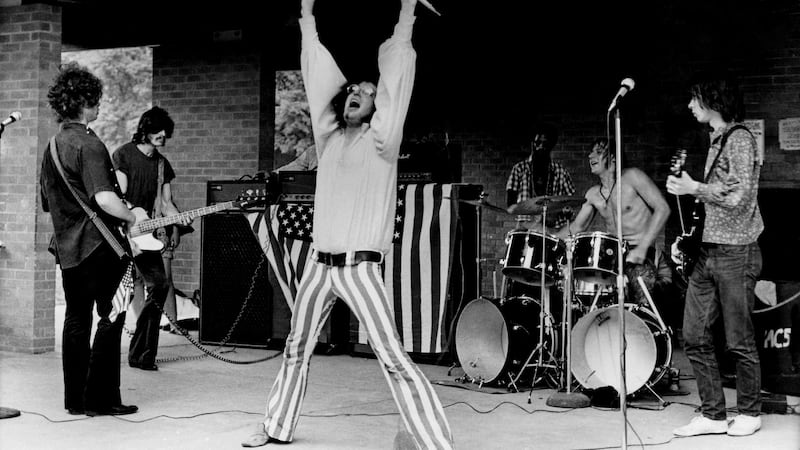
“You were going to trip out, either with drugs or just the atmosphere. It wasn’t kids screaming or rioting. It was kids coming out of themselves over the music, just freaking the f**k out at how amazing it was to have a live show, playing with that music and experiencing each other. And this sense that anything was possible. I’ve never felt that again.”
Over in Los Angeles, as the 1960s stretched out, the original Alice Cooper band were flailing. Their live show emptied rooms, and their first two albums – Pretties for You and Easy Action – were unfocused and messy. “LA and New York have got this attitude of, ‘Okay, yeah, we’ve seen everything, blah blah blah,’” says Cooper. “We played so many shows in LA and just got zero reaction; it was hard, guitar-driven rock’n’roll, and LA was not into that. LA was much more into jazzy rock’n’roll: the Doors and Love and Buffalo Springfield.”
Cooper and his manager Shep Gordon knew the band had to go somewhere else, but at this point the sound of Detroit – despite it being Cooper’s home town – was still a mystery to him: “I had never heard of Iggy and the Stooges, the MC5, or Suzi Quatro. They were not known in Los Angeles.”
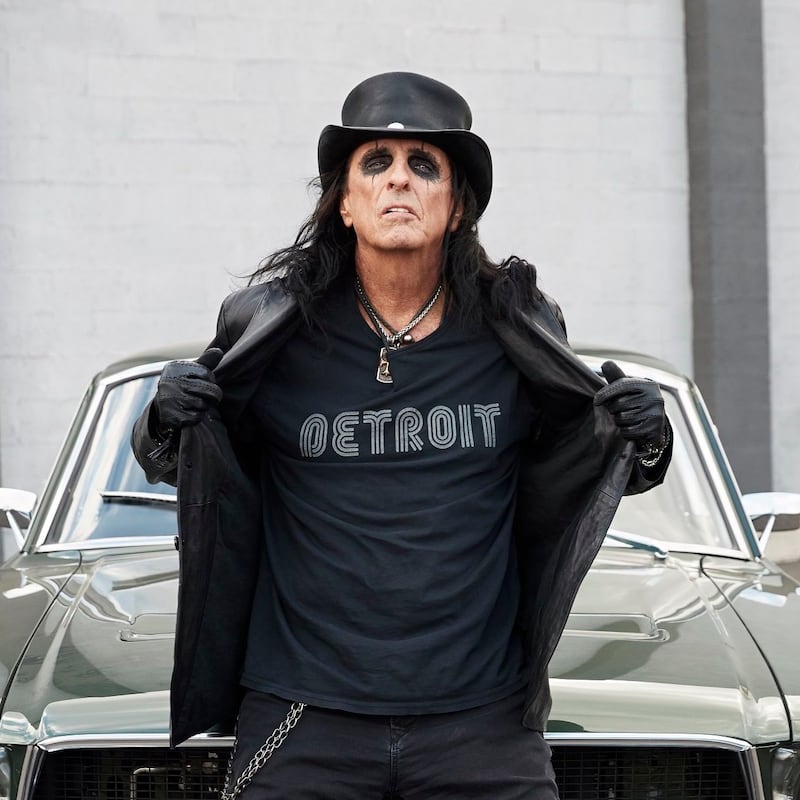
The Detroit groups evolved in their own ecosystem: the school dances, the clubs, the A-Square record label, the Detroit-founded Creem magazine, and the radio and TV station CKLW. “You could hear Patsy Cline and James Brown on the same station, so even the radio was integrated,” says Scott Morgan, singer with the Rationals. “Detroit wasn’t that segregated musically.” That was reflected in the music: the Rationals’ breakthrough singles were versions of the Holland-Dozier-Holland standard Leavin’ Here and Otis Redding’s Respect; the MC5’s earliest recordings were soul covers, and they long remained part of their sets.
“Soul music ran through Detroit rock’n’roll,” Cooper says, remembering his childhood in the city. “You turned the radio on and that Motown sound was there all the time.”
By the late 1960s, though, R&B was ceding ground to something heavier in the Detroit sound, under the influence of British bands who came over to play the Grande, such as the Kinks and the Who. Perhaps it also reflected the counterculture turning more aggressive in the face of the intensification of the Vietnam war, and the rise of leftwing political groups in response to that. The Rationals had become a hard rock band, the MC5 were trying to bring to musical life the mantra of the White Panther party co-founded by their manager John Sinclair – “Dope, guns and f**king in the streets” – and the Stooges, having begun playing what Tek describes as “freeform energy freakouts”, had progressed to the brutish simplicity of their first album.
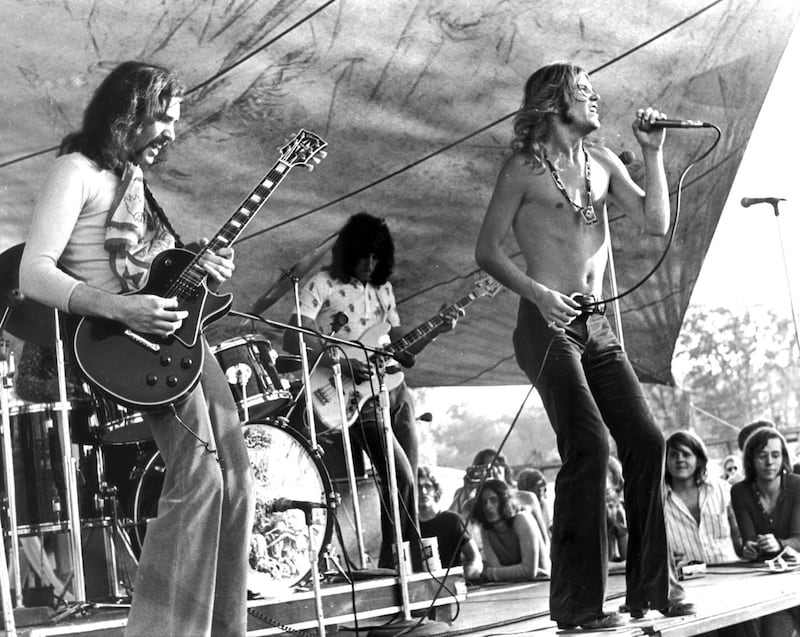
This was the Detroit the Cooper band turned up in, albeit by accident. “Shep Gordon, my manager, says: ‘The first place we go to that we get a standing ovation, that’s where we’re moving to.’ We got on this bill called the Saugatuck pop festival in Michigan, in 1969. I see the MC5 and I go: ‘Wow, that’s a showband. Those guys are totally different.’ They’re like a black revue, only white guys, and political on top of it. And then I see this guy walking on everybody’s hands, with peanut butter all over him, singing ‘I’m loose!’ And that’s Iggy. Then we got up on stage, and the audience went crazy. And then they found out that I was from Detroit, and we were immediately a Detroit band. That kind of guitar-driven sound, it was in my DNA.” He realised that “LA was all about image”, and moved home.
While the MC5 installed themselves at the Grande, Cooper became the de facto house band at another Detroit club, the Eastown Theatre. “It’s a rock dungeon, and it’s sweaty, and it’s hot,” Cooper says, “And you look down and there’s Smokey Robinson. And you look over the other side and there’s one of the Temptations, or one of the Supremes. All the Motown acts loved hard rock because of the energy behind it. And when they played, we would all go down there. Even after the [1968] riots, if you had long hair, and you were in a band, you could walk into any black bar downtown, and you were fine. Music was one of the only places where nobody really looked at colour.”
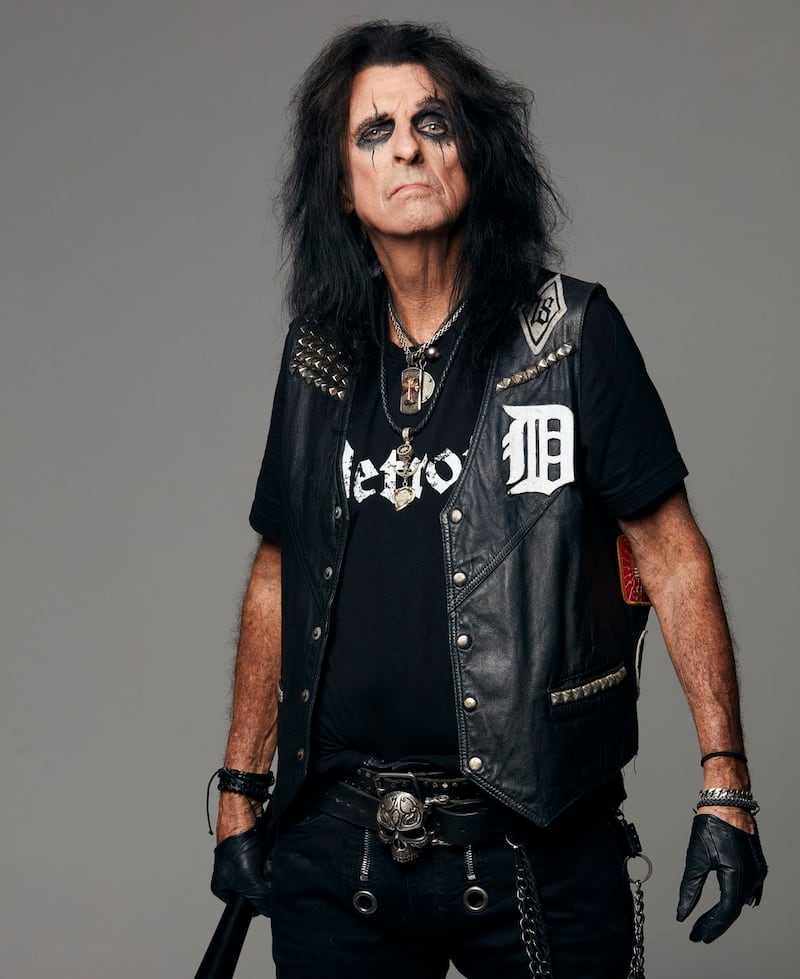
As Cooper was rising, Mitch Ryder was returning in a band called, simply, Detroit, with Badanjek again his drummer, and this time eschewing R&B for hard rock, in tune with the times. Lou Reed said their version of rock’n’roll was how the Velvet Underground’s should have sounded, but Detroit were symptomatic of the malaise that was descending over the city’s rock scene by the early 70s. Heroin was beginning to destroy the Stooges and the MC5, and Detroit – the band – became too enmeshed with outlaw biker gangs to reach the mainstream.
“Real bikers, the One Percenters, were our road crew,” says Badanjek. “It was so insane. We were hanging around with the bikers, some of the guys were riding with the bikers, and the club owners were shooting at us with guns. It finally just dissolved. The heroin bandwagon wasn’t good, and that kind of destroyed the band itself.”
“Up until 1968 and 1969, people were testing the limits of reality,” Scott Richardson says. “Then the drugs got worse. The sense of community that certain people were going for didn’t happen the way they wanted it to.”
What enabled Cooper to move beyond Detroit was the producer Bob Ezrin, who found in the band the perfect canvas on which to paint his picture of hard rock. “When he came into Detroit, we had to stop and relearn how to play. It was every day, 10 hours a day, and that’s when [the third Alice Cooper album,] Love It to Death, came out. He taught us so much about dynamics: ‘You, stop playing. That’s now what the germ of this song is.’ Simplify everything. We never really wrote an album until we met Bob Ezrin. I think the first Alice Cooper album was really Love It to Death.”
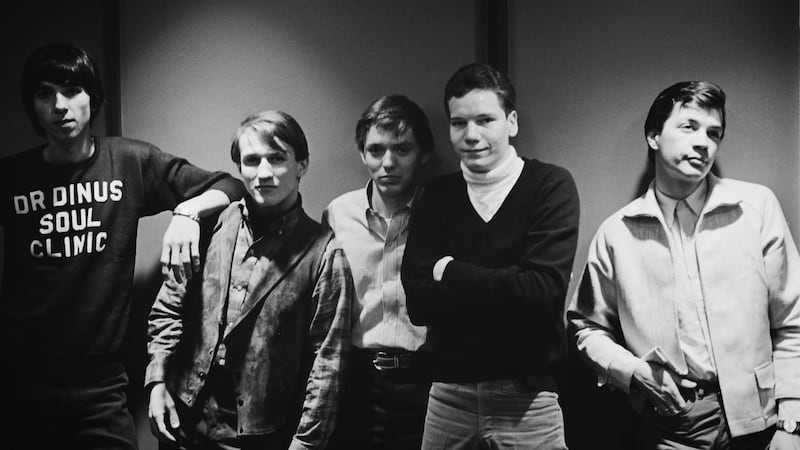
Love It to Death spawned the first national hit for Alice Cooper, I’m Eighteen, and they were off on a new trajectory. For Scott Richardson, it was the beginning of the end for high-energy Detroit rock’n’roll. “Alice had a great show. But it was even better before all the nonsense started with all the guillotines and the props and everything. When they just played, they were really, really cool. With Alice Cooper and Iggy Pop, everybody decided to become rock stars. It’s like anything else in America, you’re gonna find a way to make a buck off it. And that’s what they did. And then it became showbiz.”
The MC5 and the Stooges ended up with legends carved in stone. Alice Cooper, Bob Seger and Ted Nugent all became genuine, copper-bottomed rock stars. Other musicians gravitated to new things. Steve Hunter, the guitarist in Detroit, became a sideman for Lou Reed, as did Dick Wagner of the Frost; that’s the pair of them dazzling on Reed’s live album Rock N Roll Animal. As David Bowie ascended to stardom, Scott Richardson became part of his inner circle, helping select songs for the covers album Pin-Ups, and co-writing two tracks on the Spiders from Mars guitarist Mick Ronson’s solo album Slaughter on 10th Avenue. But neither has forgotten the city’s 1960s rock’n’roll scene.
"It's Detroit, you know?" says Johnny Badanjek. "It was like flying 150mph in a Corvette." – Guardian
Detroit Stories by Alice Cooper is on earMUSIC















